My experience on the M1 100Mbps fibre broadband has been “so far so good”. In the two weeks I’ve been using it, things have generally been fast, going by most of the casual tests I carried out.
Downloads from cached sites are fast. On a weekend, a graphics card driver downloaded from the AMD site (above), which is cached in Singapore by its distribution partner Akamai, gets me speeds of 8.8MB per sec, or 70.4Mbps. Very fast.
What about content hosted in Singapore, like Electronic Arts Singapore’s game site, which offers downloads for Singapore gamers? I got a consistent 3.3MB per sec, or 26.4Mbps, which seems to be close to the 30Mbps offered to non-StarHub customers. Still pretty fast.
And while overseas sites still lag behind, the downloads are not all that slow. A random download from Download.com, for example, gave me 150KB per sec, or 1.2Mbps, which is not bad. Meanwhile, YouTube seems to play well as well – even with high-def 720p music videos – at about 1am, as I write now.
Finally, what about Bit-torrent? I just got over 2MB a sec, or 16Mbps, when downloading a 3.3GB Linux DVD (see below). That means less than half an hour for that DVD to be downloaded to my PC.
No, this is still not at the full 100Mbps, but that’s because bit-torrent speeds also depend on the number of people seeding and sharing the files (there were 52 in my example, but it can go up to 100 or more) and how fast their upload speeds are.
Also note that I was only downloading one file. Because I have excess capacity, I can still download other files in the background without slowing anything down, like surfing the Web at the same time.
I’m happy because this was not possible with the same broadband service I had paid roughly the same for in the past. If I were downloading the same file at the same speed (16Mbps), that would have used up all the bandwidth I had (16Mbps). My surfing would have slowed to a crawl.
Now, I’m glad I’ve got a better deal. To me, that’s progress for many a long-suffering broadband user in Singapore.
And this is just the beginning. As more homes get hooked up, as 2012 comes when everyone is onboard, fibre broadband services will likely get even cheaper. Even if you don’t want these faster services, you’ll still benefit because traditional broadband services will likely be priced lower as telcos start feeling the heat from the competition.
Have you got fibre at home, or are still waiting for things to be hooked up? Share with us your own experiences and what you hope to see in the comments below!

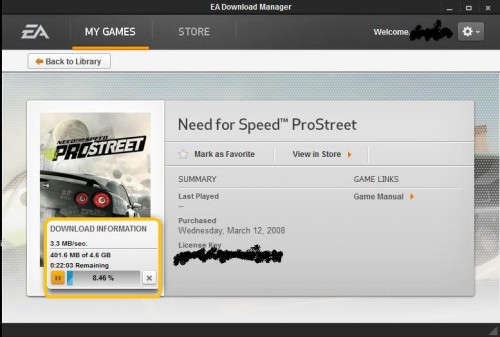



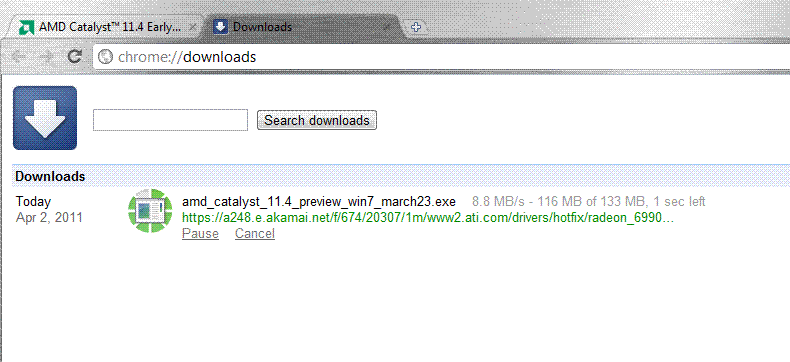



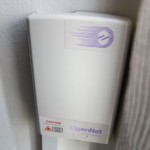


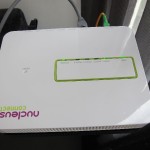
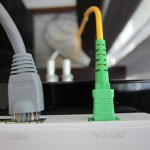



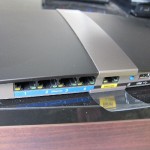






Recently I learned a ‘hard lesson’ by upgrading my fibre broadband from 100 to 300 Mbps with a dual speed router on 5G and 2,4G. My family has 1 notebook with ‘N’ wireless card and 3 on ‘G’. The speedtest shown 290/300Mbps+ if I connect by wired to the router. Otherwise, on wireless, the one with ‘N’ wireless card clocked up to about 100/130+Mbps and the rest at about 20/30Mbps+ In actual fact, we don’t need such high-speed fibre and the saving can use to buy better network card. This is because
1. The download speed is subjected to the content provider
2. The speed also subjected to the wireless card and the maximum speed is 100Mbps plus even the broadband speed is 300Mbps
3. I do not notice any major different in speed for surfing or downloading
Anyone can give some advice? Btw, is there wireless card that can increase the speed up to 1000Mbps?
Hi Blue, that’s true. I’d agree with your observations. The speeds offered by the service provider still have to be matched by what’s on the other side – the content provider. To be fair, what the extra bandwidth also means if that you can have several streams/users at one time without anyone noticing a slowdown.
However, at current situations, where most sites or services don’t offer more than 10Mbps each, you’ll be hard pressed to max out 100Mbps or 200Mbps, never mind 300Mbps on a regular basis, unless you are a very heavy user.
As for wireless card with 1000Mbps, I really don’t have any in mind. Some Wireless AC routers and cards promise a theoretical top speed of 1Gbps or more, but I believe that’s only possible in ideal situations, e.g. no walls blocking the signals, little interference, etc.
Hey Alfie, your ex-colleague here. I’m using Starhub fiber and I must say I’m rather disappointed. Sometimes it feels like its slower than my prev cable connection! When I have more than 2 or 3 devices on, it just jams up or stops working. The connection drops frequently (never had this prob with cable) too (“no Internet connection”) and I have to reset the modem in order for it to work again. So if your cable connection is working fine for you, don’t bother with fiber. It’s a myth! —Andrew
Truglo sells both a tritium handgun sight and a fiber optic one. The fiber optic sight is significantly cheaper but is there really that much of a difference? What is the difference in the two?
I had problem on my starhub firber if I use N Rounter for download I only get the speed of less than 1 Mbps but if I use a G Rounter I am able to get the speed of 15 to 20 Mbps.
if you have speed problem on firber with a N Rounter try to change to a G Rounter and you will see the different.
singtel fibre connection apparently has problem connecting to wordpress admin panels on certain webhosting companies. Ran a test together with a US based webhosting company. Tested with M1 3G Huawei modem, OK. Tested using VPN to a campus network and use that to connect to a wordpress admin, tested OK. Only SIngtel fibre has that problem. 14 days and counting still no response from the network engineering dept.
That’s interesting. Thanks for sharing. Care to share which webhosting companies you have used? Perhaps there might be others who have had the same problem or those who have found a workaround.
Why M1 fiber optics only can download torrent limited time before 12pm only.
@ec41a25920b7fc4490012083897ac3a6:disqus
Hi, Alfred. Does it work well if I use M1 fibre broadband using just the modem provided by OpenNet and connect directly by LAN to my PC in the bedroom. Since I am the only want one using it for the time being, I intend to upgrade and connect via Asus RT-N56U Wireless Router later on. What do you think? Thx u.
Brian
Hi Brian, you mean the ONT (optical network terminator) issued by M1? It works – just make sure you know which of the ports is assigned to M1 for fibre broadband and plug it from there. Alternatively, if you choose the Huawei gateway (a router actually) from M1, that router will be plugged to your ONT and you can use any port on the Huawei router. Since you intend to use your own router, I’d recommend you go without the Huawei router. You really only need the Huawei if you want to have voice to go with the package.
@albert
Tested Superinternet 100Mbps on Bittorrent. Super fast, compared with other friends testing on SingTel, StarHub and M1 at the same time (also 100Mbps)on the same five torrents started at the same time.
My average download speeds on the same five torrents is about 4MB/s, whereas some of the rest of the folks hover between 1 to 2 MB/s.
Think it’s to do with how the ISP shapes Bittorrent traffic.
for fibre broadband users experiencing occasional disconnections, try moving the Huawei residential gateway to a different location. after moving it away from other electric devices, the problem was solved in my case. of course, a most obvious solution is to use another router, but we cannot use the phone service without the Huawei residential gateway. other users may have other solutions.
one does wonder why they did not come up with an all in one device instead of issuing two devices (a Huawei ONT and residential gateway) or at very least an ONT that has a phone jack.
The unfortunate problem in Singapore is that we have high speed local connection, with no content to consume. The same old lament and grief will be repeated in local forums about how slow international connection does not match up to the local subscribed speed.
@Alfred: any news from Starhub about revising their cable Internet speed? I had the impression that they would making that move soon after introducing MaxInfinity. Current Starhub cable modem price plans are turning obsolete.
Would like to comment the following:
1. Now, when you speak to SingTel, they will tell you local max download/upload speed as well as International max download/upload speed. So, when they sell you a 100Mbps, the local top speed is really 100Mbps but the international is may be 25Mbps. I think this time IDA really do their work to press these ISP to reveal the truth.
2. Currently I have a 15Mbps Broadband from SingTel, upgrading tomorrow to fiber Internet. But when you download from overseas, the “performance is slow” even the content provider has super bandwidth to the world. This is because the ISP here really do throttle the traffic. If they scanned the traffic to be bit torrent, they will cap the speed. Even if you download a huge file, they did that too. The only way that they do not stop the traffic is to have overseas VPN. When you do turn on the VPN, they will let it thru. So, if you do the same download again be it bit torrent or downloading the files, you will see per file download is 2Mb/s restricted by these VPN providers. So, by doing this test, you already know no matter you go with fiber or stay on cable or ADSL, Singtel’s filter will still block all these. They cannot block VPN as they cannot see what’s inside the VPN packets.
3. Big ISP got lots of customers and heavy users. So, the more users and bigger bandwidth they sign up, the more upstream IP Transit they will have to buy. But they cannot buy forever, so, they need to throttle the traffic. Small ISP has lesser users, and usually they are corporate ISP. That means, their usage pattern is heavy in day time, but at night time, they usually have lesser traffic. That is why the speed is fantanstic for these smaller ISP. But bear in mind, when more users build up, you will face the same congestion again… So, there is no best or worst ISP. All ISP needs to make money, and they will have to setup policy to cap these usage.
just some 2cents comment…
Thanks for sharing. I know this comment is already more than 2 years ago, but might be worth having the update that the ISPs seem to have removed the international barrier.
However, I still do not see the benefits of adopting this technology, given that the constraint is more towards the server side. Unless video/tele conference over Home TV/laptops gets more mainstream, it will be difficult to convince me to move.
http://info.singtel.com/personal/internet/home-broadband/fibre-broadband
“Ultra-Fast Speeds
With no international bandwidth cap, you can now surf web content at blazing speeds of up to 300Mbps.
Enjoy maximum bandwidth to surf, download and stream multimedia content with no set limit on international transfers or file sharing.”
I’m on superinternet here and loving it(although only a short while). One thing not mentioned is that superinternet does not use transparent proxies, which means you can download from filesharing sites like rapidshare with no issue. Also, they buy transit directly from NTT, a gd tier 1 provider.
Hey David, good to hear from a SuperInternet user. I think geeks will like what they offer, especially the fewer restrictions they claim to have. Glad to hear you got a nice experience there. 🙂
@Chi-Loong: Please do share your experience with them and also your peering speed with Alf. I’ve always been curious with SuperInternet but their “untested” reputation and their $200 sign up requires careful consideration.
Woah! Great stuff Alf.
I’ll be getting SuperInternet’s service this Saturday for testing purposes, so looking forward to the speed rush.